In a recent report, Forbes Advisor labeled Hawaii as having the worst driving behaviors in the U.S., citing everything from speeding on roads to texting behind the wheel. Based on a survey of 5,000 drivers nationwide (100 from each state), the report comes with a fair share of eyebrow-raising claims, especially for those unfamiliar with driving in the islands, including Honolulu. But is it accurate to say Hawaii’s drivers are the most dangerous, or is this another case of sensationalized Forbes Advisor reporting?
To answer that, let’s examine the real issues facing Hawaii’s drivers and passengers and compare local perspectives to Forbes’ claims.
Aloha or aggression? What Forbes gets wrong.
Forbes claims that Hawaii drivers are the worst when it comes to speeding, running red lights, and failing to signal, but a closer look at the situation suggests that these issues are not unique to the islands. Brendon C., a Maui resident, remarked, “No one here uses turn signals. Never seen anything like it. It’s like they are allergic to them.” This may be frustrating, but it’s hardly a unique problem compared to places like California or the mainland.
Li W. from the Big Island observed, “In the last 10 years, I hardly ever saw road rage. Now, it’s a daily occurrence.” That said, many readers emphasize the courtesy still present on Hawaii’s roads, with David J. adding, “Sure, the locals drive a little fast, but they are by far the most courteous drivers I’ve ever seen.” These contrasting viewpoints highlight the complexity of driving experiences here, something Forbes’ report misses.
Misleading methodology: questioning the Forbes survey.
Forbes based its conclusions on a survey of 5,000 U.S. drivers, but the issue lies in how such a survey can paint an accurate picture of driving in Hawaii, a state with a population of only 1.4 million. As reader TomK pointed out in a previous discussion:
“Driving the H 1 in Honolulu differs greatly from driving Route 50 in Kauai. On Kauai, I still see people routinely let others merge, rarely hear a horn, rarely see tailgating, and do see Shaka’s for letting people go/merge ahead of you. Years ago I saw a great bumper sticker on an old car on a Kauai road driven my a local – “If you think I’m driving too slow, you’re on the wrong island.”
Comment from TomK
Rich T. adds context about the roads themselves: “Traffic and congestion planning in HI is non-existent… My biggest beef about HI drivers on the Big Island is the passive-aggressive driving practiced by many locals.” This suggests that while frustrations exist, they do not justify Forbes’s sweeping generalization. The report neglects to address how the limited road infrastructure and heavy tourism affect local driving patterns, leading to congestion rather than recklessness.
Real driving data: what’s happening on Hawaii’s roads.
While Forbes highlights risky behaviors like running red lights and speeding, local perspectives indicate a mix of island courtesy and frustration with out-of-state drivers. Jorge R. shared, “I’ve never seen more reckless, careless, cavalier drivers than anywhere in the states or the world. Red lights and stop signs are optional.”
At the same time, there are genuine frustrations tied to road infrastructure. Dennis D. commented, “The situation on some of the most problem roads could often be improved by widening those two-lane roads! A prime example is the road to Kaanapali from the Hwy 30/380 intersection to Lahaina.”
Much of the frustration stems from infrastructure challenges rather than dangerous driving behaviors unique to Hawaii.
Forbes may focus on Hawaii’s speeding habits and driving at excessive mph, but the road quality is a more concerning issue for locals. In our previous article, “Driving in Hawaii 2023 | The Worst State,” we highlighted the dismal state of Hawaii’s roads, which Forbes did not factor into its analysis.
Aloha still rules: courtesy and patience on island roads.
Despite the report’s claims, many readers find Aloha’s spirit alive and well on the roads. Craig H. described his “rules” for navigating Kauai’s infamous Kapa’a crawl: “Relax, you will get there when you get there; let people merge and make left turns; and liberally use the shaka.”
Another reader, Bill T., compared Hawaii to Sacramento: “Driving seemed fine to us; certainly no worse than in Sacramento.” And, Dot S. emphasized, “For the most part, I use cruise control and set it for Hawaii speed limits. It is without fail some pick-up truck will blast past me in no-passing zones… but overall, the Big Island has been one of the more pleasant places to drive in the U.S.”
In contrast to Forbes’ portrayal, the reality for many drivers in Hawaii is one of patience and adaptation for drivers and pedestrians. The presence of tourists unfamiliar with local roads may create occasional tensions and even confusion about local right-of-way traditions. Still, locals and visitors alike share an understanding of island time and the unique driving conditions.
Conclusion: Sensational reporting vs. reality.
Forbes Advisor’s report may have caused a stir with its dramatic ranking of Hawaii as the worst state for driving behaviors, but local experiences tell a more nuanced story. Yes, there are challenges— from road conditions to congestion— but the overarching narrative of dangerous driving behaviors doesn’t hold up when we consider the spirit of Aloha that still governs much of Hawaii’s driving culture.
As Frank P. wisely put it, “The attitude toward traffic rules is a little lax, like most things here… but it is very rare that I see anything like road rage or even rudeness on the roads. Any time I see bad driving, it is far more likely to be someone with bad driving habits than someone being a jerk.”
In Hawaii, driving isn’t just about getting from point A to point B; it’s about navigating the unique challenges of island life, often with a shaka and a smile. Forbes may have gotten this one wrong— but Hawaii drivers, with all their quirks, remain far from the worst.
Get Breaking Hawaii Travel News
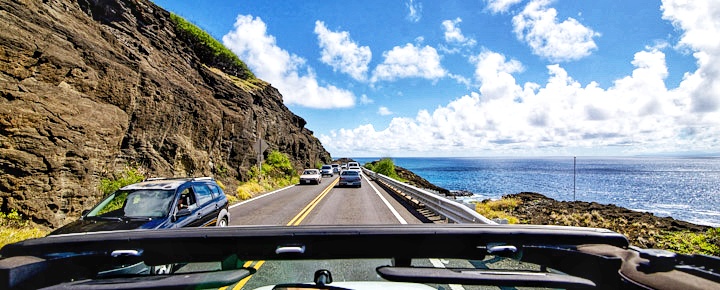
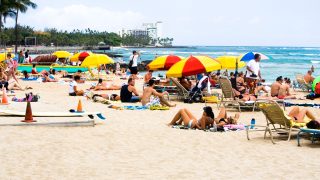
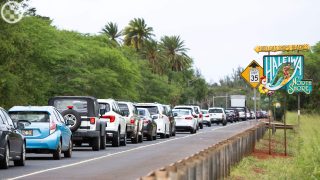
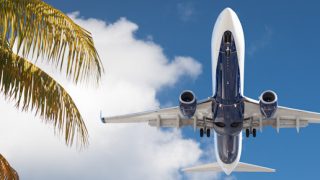
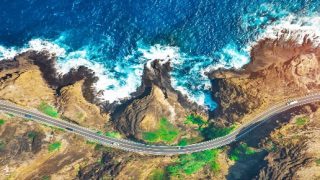
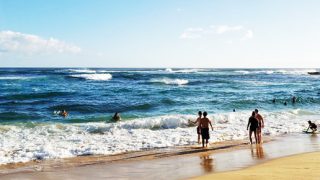
Forbes has mastered the art of clickbait articles. I wouldn’t rely on anything they publish as being remotely accurate. They’re just trying to sell ads.
A well written article. Driving on the various islands is different. We’re now on Kauai, where almost all the drivers are very courteous. It is getting much more crowded on the roads than it once was, which is hardly surprising.
When reading these surveys, always consider the sources. Much of what is out there is not well done.
I got home from the Big Island last night. After picking up my car and starting to head home my first thought was OMG people drive so fast here (California). I like driving on the island. I like that drivers slow down and let people turn left, that they are careful around pedestrians, and the general slower speeds on the roads.
One really dangerous driving pattern I see on the Big Island is failure to turn on headlights at dusk. It seems as long as the drivers think they can see the road OK enough to drive, they don’t need to turn on their headlights. This makes it really hard to see them. Are they trying to lengthen the life of their lights? Concerned about light pollution? I don’t get it.
Huh. I live on Hawai’i Island, Kona moku, and what I see is mostly folks who live here use turn signals religiously, less so the tourists (excuse me, “visitors”). Frequently the local drivers (lifted Tacomas excepted, eyeroll), shaka in one another and often share same courtesy to visitors. It’s mostly the rental car drivers that are rude: snug up behind on the right to turn first, speed, honk (Please: Don’t!), pass when no need, and otherwise bring their hurry. So not sure about Forbes article, sorry they experienced different, but that’s my observation.
To me, here on Maui Forbes got it right. Red lights & stop signs do appear to be optional. Almost 3-5 accidents a week, with prob 99% preventable. If you have a straight thru green light, expect the right on red car to pull in front of you at the last possible moment. The paradox is the aloha/shaka to let you in, stop traffic to allow a turn and literally no one knows how a 4 way stop works. Worst offenders? Speeding trucks driving like a dirt race track driver, while driving by with a “this ain’t the mainland” bumper sticker. How ironic. I have more fear of my elderly mom driving in Maui with these lolo’s here, than driving in California. Lastly and sadly, it appears aloha is becoming just a word and greeting and not a way of life..
In one word: “Yes”. One of the things I always tell people headed for the islands safety wise is: If you are the first in line at a light controlled intersection Always count “thousand one, thousand 2” Before proceeding. Running lights is epidemic in Hawaii and has caused a terrible number of deaths and injuries.
I can’t remember the number of times I’ve delayed at a light only to watch a jacked up truck or SUV and street racer type of car go screaming through the light after turning red… Please keep this in mind. It literally could save your life…
Best Regards
I was on the bus when a driver cut off a bus entering Honolulu exiting the Pali Highway in which the bus driver locked up his brakes and slammed on the horn. I think the car came 6 inches from being smashed good. I visited Waikiki 4 times and every time I have noticed someone that got injured in a crosswalk with and ambulance and medics assisting. Have you really noticed how many sirens you hear in Waikiki alone. One every hour. I surely made sure the cars stopped before I stepped into any crosswalk. Are drivers bad in their driving skills or just Impatient and Rude?
Lived here from ’89-’93 and moved back in 2018. One bit of wisdom will ease much impatience: I don’t get to set my speed limit; the driver in front of me does. Once that’s embraced, the impatience vanishes. It’s all about one’s perspective.
On the quieter neighbor islands, most aggressive driving is either teens in lifted Tacomas, or tourists in Jeep rentals. Distracted driving, on the other hand, is almost completely a local thing. No text or phone call is so important that it can’t wait. There are multiple daily incidents of light turns green, but the driver has their head buried in their phone texting. I normally hate importing laws and ideas from the mainland, but California’s distracted driver law would be a huge benefit.
I agree. Hawaii drivers are aggressive,few drivers yield for pedestrians or cyclists. Hawaii has a sad car centered aggressive mentality
I live in Northern California, I have driven Oahu, Kauai, Maui and the Big Island. In California we have the worst drivers in the world, it has only gotten worse since the pandemic. I always thought the rule was to keep right except to pass, now alot of drivers pass or zig zag in traffic to get ahead. Oahu was tough as there is alot of cars, however it was just traffic and none of the cutting in and out of cars in traffic. I think Forbes got it wrong. Just my opinion.
Aloha~ not clear how a 5000 respondent survey, with just 100 comments on Hawaii could possibly represent the actual driving habits in Hawaii. My wife and I have been driving Hawaiian roads for over 35 years and while every once in a while, there’s some jerk, the vast majority of driving experience has been very positive. Seems to me that Forbes took the easy way out and just looked at the negative. Living in California, we see some pretty crazy driving so I think we have a better baseline to compare against. Hawaii, don’t sweat it, it’s a beautiful place to drive and we see the aloha spirit.
We have been to Honolulu/Oahu twice. Both of our visits have been wonderful vacation trips. Without a strict schedule or agenda I took it easy driving, exercising normal courtesy, & I didn’t encounter undue problems. This includes the “Interstates.” I will say that between traffic volume & pedestrians driving in the Waikiki area can be a bit hairy. You would be well-advised to put your phone away & pay close attention behind the wheel there.
I did notice many of the secondary roads were pretty narrow, especially on the eastern side of the island. Sometimes I would need to pull off & let oncoming vehicles come the other way, but this worked both ways with other motorists doing likewise for me.
No turn signals in Hawaii is par for the course. It’s like people feel they lose “cool” points if they use their blinker. Not even the police use turn signals. Add the fact that everyone feels they Need to be the first car at every red light and multiple lane changes just to get one car length ahead and I’m not surprised people think Hawaii drivers are some of the worst in the nation.